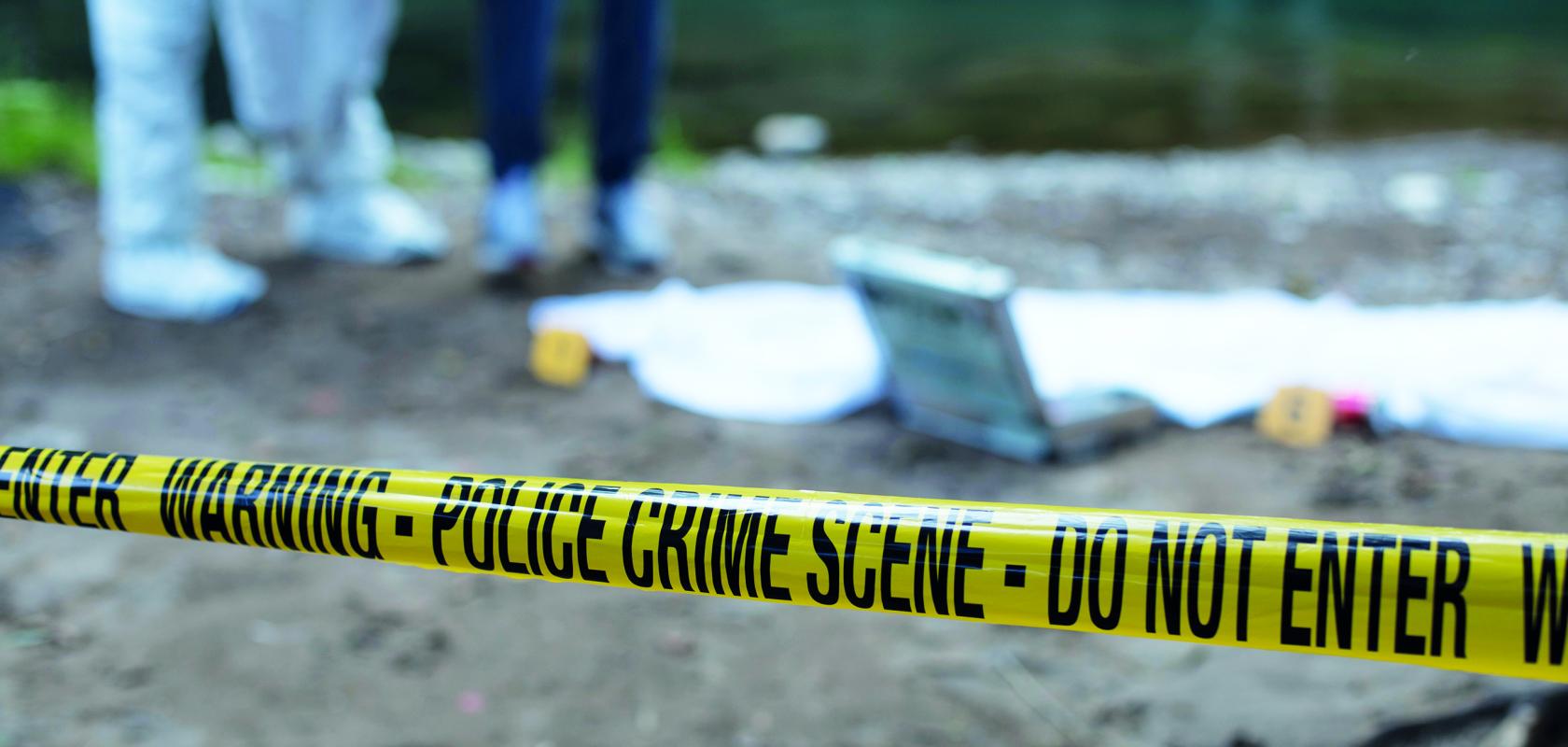Forensic science applies scientific techniques and methods to gather, preserve, and analyse evidence in criminal investigations and trials. The goal is to use scientific evidence to provide impartial facts that can help to establish the truth.
The field covers a wide range of areas, including criminalistics, digital forensics, and forensic biology. The techniques are wide ranging, from the analysis of DNA, fingerprints, and blood stain patterns, to the examination of firearms, ballistics and tool marks. Then there is serology, toxicology, hair and fibre analysis, entomology, anthropology, odontology, pathology, epidemiology, footwear and tire tread analysis, drug chemistry, paint and glass analysis, digital audio video and photo analysis – the list goes on.
Imaging has a crucial role to play in forensic science. It is used to provide visual evidence that can support or refute various aspects of an investigation. It has use cases ranging from crime scene photography or video surveillance to the use of techniques such as X-rays and CT scans to examine human bones. Forensic imaging software can also be leveraged to compare images of a suspect to existing records, such as mugshots or passport photos, to accurately identify an individual. In digital forensics, imaging tools are used to create an exact copy of a digital device's storage medium in order to analyse and uncover any hidden or deleted data.
As imaging technology advances, it opens up more powerful tools to assist forensic scientists. One particular challenge it can help to overcome is identifying “rare trace” evidence. This can be problematic for a number of reasons, such as an insufficient sample size, contamination or interference, and analytical technique limitations. Trace evidence, such as hair or fibre, may also not be unique to an individual and can therefore be difficult to link to a specific source. Then there is the securing of trace material at a crime scene, ready for examination. Transparent adhesive foils are generally used for this task. However, the analysis of materials on these foils can be a time consuming, manual and error-prone process.
Overcoming obstacles
Challenges like these can make it difficult to obtain accurate results when identifying rare trace evidence, which can have potentially serious implications in a criminal investigation. To overcome these obstacles, forensic scientists can use a combination of specialised techniques, such as advanced imaging and analytical methods, to ensure reliability and accuracy. Arthur Stauder, Product Manager at Qioptiq Photonics explains: “Future-oriented and innovative technology can significantly improve trace analysis in the field of forensics. What’s more, these methods and components can also be used in other areas of machine vision and recognition, resulting in new possibilities in the areas of production and quality assurance.”
A recent example of advancement in this area comes from a Horizon 2020 project financed by the European Commission (EC). The project was led by the SHUTTLE consortium, which consists of six forensics laboratories from France, Greece, Netherlands, Lithuania, Portugal and Israel, alongside commercial contractor partners including Aura Optik. The aim was to develop a toolkit to facilitate the analysis of micro traces collected at crime scenes.
Two product prototypes were produced, a high-throughput screening microscope; and the AG Shuttle Toolkit Jena, which uses a new approach: imaging the material of a trace carrier completely, with the required optical resolution and in all required spectral modes. The resulting images can be analysed and organised by the Toolkit program. Image stacks are evaluated and classified by means of Artificial Intelligence (AI), while images and classification results are stored in an Enterprise Content Management System (ECM) database. This approach also provides the advantage that all alleged traces are digitally recorded.
High-resolution optics
In terms of the technology, the AG Shuttle Toolkit Jena provides complete image capture with a 150MP sensor and corresponding high-quality optics, which can record an area of 53,4 x 40,0 mm² for the required S- and P-images (LoRes) and 17,8 x 13,3 mm² for M- and F-images (HiRes). The achievable optical resolution is 10μm and 3μm, respectively. The quality of these optics was critical in achieving both optical and spectral detection of traces to enable high-quality images in the critical wavelength – between 320nm and 720nm – required by forensic scientists. Happily, when Aura Optik and the consortium were searching for these very high-resolution optics, they found a reliable partner in Excelitas.
Stauder reveals: “Innovative optics in connection with constantly increasing sensor densities as well as the possibility to process ever larger amounts of data enable many solutions in the field of machine vision and robotics. Excelitas is the right partner for high-tech components and systems in the field of photonics. In the field of optical inspection and systems, we offer state-of-the-art individual components from simple lenses to extremely high-resolution lenses and microscope systems for large sensors to complex subsystems with integrated lighting, motorization and more. Our R&D, technology department and production, all located in Germany, is constantly working on innovative and efficient improvements in order to be able to offer top optical products in the high-tech area for special challenges in the future.”
In order to generate large amounts of data quickly, an extremely large, high-resolution sensor was chosen for the toolkit, and as Stauder explains, finding a suitable lens for this is not always easy. “At the same time,” he says, “it must have a large aperture so that the cycle times can be shortened and the diffraction limit pushed up. Another challenge was the large wavelength range to be covered in order to make the invisible visible and detectable.
However, we quickly found what we were looking for in our Linos premium lens series with the d.fine HR and inspec.x and the results speak for themselves!”
The Linos d.fine HR 2.4/128 3.33X high-resolution inspection lens is optimised for a magnification factor of 3.33X achieving object resolution of up to 300 lp/mm across image circle diameters as large as 82mm. It also enables dual-support for both 12k/16k line sensors and large format area sensors, providing maximum versatility. Continues Stauder: “The d.fine HR 2.4/128 3.33x impresses with its extremely high resolution over the entire image circle of 82mm. It also has a very large aperture and features a diffraction-limited design.”
The Linos Inspec.x L 5.6/105 lens demonstrates even contrast and resolution over an image circle up to 82mm. It is a perfect match with 5 µm pixel size and has a focal length of 105mm. It offers a working distance of 100-420mm and a spectral range of 400-750nm. “Furthermore,” says Stauder: “Its colour correction is excellent over a large wavelength range.”
Aura Optik and the team demonstrated the Toolkit at the 2021 Vision event in Stuttgart, Germany and the German forensic Fiber Group in Erfurt, Germany. Last year it was also showcased at the European Academy of Forensic Science Conference EAFS in Stockholm, Sweden, where feedback from potential relevant users was positive.
Looking to the future of imaging for forensic science, Stauder believes that there are still lots of potential opportunities. He says: “In my opinion, the interaction of all toolkit components with the know-how of Aura Optik and the downstream artificial intelligence and database opens up many more possibilities for forensics in terms of finding and evaluating rare traces. I am convinced that future technological developments in vision technology will continue to serve forensics and truth-finding, making the world a little better and fairer.”


